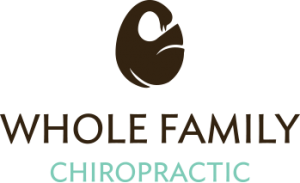Did you know that in the very first year of life, your baby’s brain actually doubles in size? Even more incredible—during this time, your baby forms over one million new neural connections every single second.
If you’ve never heard that before, you’re not alone. Most parents are told to watch for broad milestones like rolling, sitting, or walking. But what often gets overlooked is how well those milestones develop—and what they can tell us about your baby’s nervous system.
This first year isn’t just another stage. It’s the most critical window for neurological development your child will ever experience.
Why the First Year Matters So Much
The scientific term for this stage is neuroplasticity—your baby’s brain is wiring itself at an extraordinary pace, building connections that will influence every area of their growth.
-
Feeding and digestion
-
Sleep patterns
-
Immune system strength
-
Movement and coordination
-
Emotional regulation
-
Social connection and learning
When development unfolds smoothly, the nervous system builds a strong foundation. But when early stressors get in the way—things like birth trauma, prenatal stress, or repeated illness—the nervous system can become dysregulated. And because the brain and body are developing so rapidly, those disruptions can have lasting effects.
The Milestones That Matter
Conventional milestone checklists usually focus on when a skill appears. For example: Did your baby roll over by 4 months? Sit by 6 months? Crawl by 9 months?
But here’s the truth: when is only half the story. What matters even more is how well those milestones are achieved.
Nursing and Feeding
In the first months, the ability to suck, swallow, and breathe in rhythm is foundational. Research by Dr. Stephen Porges, founder of the Polyvagal Theory, shows that when babies struggle here, it can set them up for future challenges with stress regulation and social connection.
Head Control
By 8–12 weeks, babies should be able to lift and turn their heads smoothly and evenly. Favoring one side or seeming “stuck” can signal nervous system stress that may affect rolling, crawling, and later motor skills.
Crawling
Though recently removed from the CDC milestone checklist, crawling remains one of the most essential skills for brain development. Crawling integrates the two sides of the brain through the corpus callosum—the bridge that coordinates communication between left and right hemispheres. This connection supports not only movement but also future skills like reading, writing, focus, and even playing music.
When crawling is skipped or asymmetrical, it may create gaps in that neurological foundation.
What Conventional Checkups Miss
Pediatric checkups are important, but they often focus on whether a skill happens—not how. Rolling only to one side, crawling with a “scoot,” or nursing with difficulty may be brushed off as “normal variations” that babies will outgrow.
But if your gut says something isn’t right—trust it. The truth is, the first year is too important to take a “wait and see” approach. Every movement, every milestone is an opportunity to strengthen the nervous system at its most adaptable stage.
The Perfect Storm: Early Stresses That Can Disrupt Development
In our office, we see three main categories of early stress that can add up and put a baby’s nervous system into “fight-or-flight” mode too early:
-
Prenatal stress — high maternal stress during pregnancy can wire a baby’s nervous system to be on edge from the start.
-
Birth interventions — C-section, forceps, vacuum, induction, or prolonged labor can all impact the delicate upper neck and nervous system.
-
Early environmental stressors — frequent illnesses, repeated antibiotics, or toxins in the environment can overload a baby’s system.
These stressors may not cause obvious issues right away, but they can show up as feeding struggles, colic, sleep challenges, developmental delays, or emotional regulation difficulties.
How We Support Families
The brain may control the body, but the body also feeds vital information back to the brain. Movement, posture, and motor development are the true “nutrition” for a growing brain. When those patterns aren’t developing smoothly, we can assess and gently restore proper function through specialized neurological chiropractic care.
Our goal is simple: to help your baby build the strongest neurological foundation possible—so milestones aren’t just “checked off,” but achieved with ease, symmetry, and confidence.
Because when the nervous system is balanced early, it doesn’t just make for smoother feeding or better sleep now. It sets the stage for focus, learning, emotional regulation, and connection for years to come.
Final Thoughts
If you’ve ever been told, “Don’t worry, they’ll grow out of it,” but your instincts tell you something’s off—you’re not alone. The first year of life is the most powerful window to influence your child’s development. Don’t feel like you have to wait and hope for things to improve.
With the right support, you can help your baby’s nervous system thrive during this extraordinary season of growth—and set them up for a healthier, stronger future.


